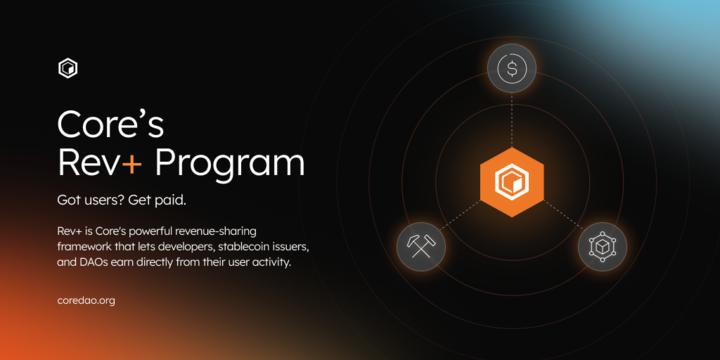
Core‘s Bold Move: A New Revenue Model for DeFi
The Core Foundation is making waves in the decentralized finance (DeFi) arena with the introduction of Rev+, a pioneering revenue-sharing mechanism. This initiative targets a core challenge in the Web3 space: providing sustainable funding models for stablecoin issuers and developers. Historically, developers often resorted to token launches to generate project funds. Rev+ aims to change this dynamic by directly rewarding participants based on their contribution to user value.

How Rev+ Works: Incentivizing Innovation
Rev+ operates at the protocol level, ensuring that developers, stablecoin issuers, and decentralized autonomous organizations (DAOs) receive compensation based on user activity within their applications. Gas fees generated by user transactions on the Core blockchain, which is the first Ethereum Virtual Machine (EVM)-compatible Bitcoin staking protocol, will fuel this revenue stream. Transactions related to stablecoin swaps, collateral movements, or vault usage will directly reward the involved parties.
Revenue Distribution: A Sustainable Approach
The revenue pool is dynamically allocated based on factors that reflect the contributions to the Core blockchain. These factors include total transaction count, unique user addresses, notional value moved, and total transaction fees. This comprehensive approach ensures that rewards are aligned with overall network utility and growth. As Rich Rines, an initial contributor to Core DAO, noted, this model establishes a “sustainable, usage-based monetization model designed to grow with Core‘s network.”
Why This Matters: Addressing DeFi‘s Economic Challenges
The DeFi industry faces economic challenges that often limit overall expansion. As Hong Sun, the institutional lead at the Core Foundation, pointed out, stablecoins now make up a significant portion of DeFi revenue. Yet, issuers often lack direct revenue from transaction activity. Rev+ addresses this by incentivizing projects to build and maintain user-friendly platforms. This shift toward a more cooperative environment is particularly crucial in a space that often operates on a zero-sum mentality.
Industry Implications and Broader Context
This move from Core aligns with calls from industry leaders, such as Cardano founder Charles Hoskinson, who advocate for collaborative economic incentives. Hoskinson emphasizes the need for cooperative tokenomics and market structures to foster sustained growth within the crypto space. The core problem, as Hoskinson observes, is the intrinsically adversarial nature of many existing tokenomics and market structures. Rev+ provides a glimpse of a possible future where DeFi ecosystems can flourish through collaborative initiatives.

Looking Ahead: The Future of DeFi Revenue
Rev+ represents a critical step in the evolution of DeFi. By aligning incentives with user value creation, Core is paving the way for a more sustainable and collaborative ecosystem. The success of this model could have far-reaching implications, encouraging other blockchains and projects to explore similar revenue-sharing approaches. This could signify a significant shift towards a more robust and rewarding environment for stablecoin issuers and developers alike.


